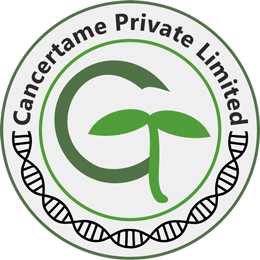[HIDE]
Contact Us
Other Articles
1. Cancertame Ayurvedic Formulation
2. What is Chemotherapy?
3. What is Radiotherapy?
4. Role of Ayurveda in Cancer Treatment
5. Genesis of Cancer
6. Early Detection of Cancer
7. Diet, Nutrition & Cancer
8. Tobacco Smoking & Cancer
9. Conventional Treatment of Cancer
10. Soft Tissue Sarcoma
11. Mesothelioma
12. Skin Cancer
13. Bone Cancer
14. Leukaemia
15. Chronic Lymphocytic Leukaemia (CLL)
16. Chronic Myelogenous Leukaemia (CML)
17. Acute Lymphocytic Leukaemia (ALL) & Acute Non-Lymphocytic Leukaemias (ANLL)
18. Acute Myelogenous Leukaemia (AML)
19. Lymphoma
20. Multiple Myeloma
21. Breast Cancer
22. Prostate Cancer
23. Oral Cancer (Carcinoma of the Cheek, Lips & Tongue)
24. Carcinoma of the Salivary Gland
25. Carcinoma of the Paranasal Sinus
26. Carcinoma of Pharynx (Oropharynx, Nasopharynx and Hypopharynx)
27. Carcinoma of the Larynx
28. Brain & Spinal Cord Tumours
29. Primary Tumours of the Brain
30. Metastases in the Brain
31. Carcinoma of the Oesophagus
32. Thyroid Cancer
33. Bronchogenic Carcinoma (Lung Cancer)
34. Secondary Cancers of the Lung
35. Carcinoma of the Stomach
36. Liver Cancer
37. Gallbladder & Biliary Tract Cancer
38. Pancreatic Cancer
39. Kidney Cancer (Renal Cell Carcinoma and Nephroblastoma)
40. Urinary Tract (Transitional Cell Carcinoma) & Bladder Cancer
41. Carcinoma of Colon & Rectum
42. Primary Tumours of the Testis
43. Ovarian Cancer (Stromal, Germ Cell and Krukenberg's Tumour)
44. Carcinoma of Uterus
45. Cervix Cancer
46. Paediatric Cancers
47. AIDS Related Cancers
48. Carcinoma of Unknown Primary Site (CUPS)
49. Role of Nutrition in Cancer Treatment
50. Chinese Medicine in Cancer Treatment
2. What is Chemotherapy?
3. What is Radiotherapy?
4. Role of Ayurveda in Cancer Treatment
5. Genesis of Cancer
6. Early Detection of Cancer
7. Diet, Nutrition & Cancer
8. Tobacco Smoking & Cancer
9. Conventional Treatment of Cancer
10. Soft Tissue Sarcoma
11. Mesothelioma
12. Skin Cancer
13. Bone Cancer
14. Leukaemia
15. Chronic Lymphocytic Leukaemia (CLL)
16. Chronic Myelogenous Leukaemia (CML)
17. Acute Lymphocytic Leukaemia (ALL) & Acute Non-Lymphocytic Leukaemias (ANLL)
18. Acute Myelogenous Leukaemia (AML)
19. Lymphoma
20. Multiple Myeloma
21. Breast Cancer
22. Prostate Cancer
23. Oral Cancer (Carcinoma of the Cheek, Lips & Tongue)
24. Carcinoma of the Salivary Gland
25. Carcinoma of the Paranasal Sinus
26. Carcinoma of Pharynx (Oropharynx, Nasopharynx and Hypopharynx)
27. Carcinoma of the Larynx
28. Brain & Spinal Cord Tumours
29. Primary Tumours of the Brain
30. Metastases in the Brain
31. Carcinoma of the Oesophagus
32. Thyroid Cancer
33. Bronchogenic Carcinoma (Lung Cancer)
34. Secondary Cancers of the Lung
35. Carcinoma of the Stomach
36. Liver Cancer
37. Gallbladder & Biliary Tract Cancer
38. Pancreatic Cancer
39. Kidney Cancer (Renal Cell Carcinoma and Nephroblastoma)
40. Urinary Tract (Transitional Cell Carcinoma) & Bladder Cancer
41. Carcinoma of Colon & Rectum
42. Primary Tumours of the Testis
43. Ovarian Cancer (Stromal, Germ Cell and Krukenberg's Tumour)
44. Carcinoma of Uterus
45. Cervix Cancer
46. Paediatric Cancers
47. AIDS Related Cancers
48. Carcinoma of Unknown Primary Site (CUPS)
49. Role of Nutrition in Cancer Treatment
50. Chinese Medicine in Cancer Treatment
Acute lymphocytic leukaemia (ALL)
Acute lymphocytic leukaemia (ALL) is also known as acute lymphatic leukaemia, acute lymphoblastic leukaemia and acute lymphogenous leukaemia. It is characterised by abnormal production of immature lymphocytes, which get accumulated in the bone marrow, bloodstream and the lymphatic system. ALL accounts for about 80 per cent of the childhood leukaemias having peak incidence around 5 years of age. In adults, ALL accounts for about 20 per cent of the acute leukaemias. Acute lymphocytic leukaemia is further classified into a common type of ALL, B-cell type of ALL (Burkitt cell acute lymphocytic leukaemia), T-cell type of ALL and Null-cell type of ALL (undifferentiated ALL), depending on the type of the lymphocytes of its origin. The common symptoms of acute lymphocytic leukaemia include fatigue, malaise, fever, chills, respiratory discomfort, bone & joint pains, gum hypertrophy, anaemia, loss of appetite and flu-like symptoms. There may be generalised lymphadenopathy, hepatomegaly and splenomegaly. Thrombocytopenia may occur leading to bleeding tendencies such as gingival bleeding, epistaxis, menorrhagia, blood in stool and bleeding in the skin & mucosa. There may be neutropenia leading to persistent bacterial, viral and fungal infections. The increased number of leukaemic cells in the blood may lead to impaired circulation causing headache, confusion and dyspnoea.
There is no definite staging system for ALL. In untreated cases, there are too many leukaemic cells in the peripheral blood and the bone marrow. In the remission stage, the peripheral blood counts and the bone marrow return to normal following the treatment. In the relapsed stage, the leukaemia recurs. In the refractory stage, the ALL fails to go into remission even after the treatment. Procedures used to diagnose acute lymphocytic leukaemia include complete blood count, bone marrow biopsy and CSF examination.
Acute non-lymphocytic leukaemias (ANLL)
Acute non-lymphocytic leukaemias (ANLL) include acute myelogenous leukaemia, acute monocytic leukaemia, acute promyelocytic leukaemia, acute erythroleukaemia and acute myelomonocytic leukaemia. The most common among these is acute myelogenous leukaemia.
Disclaimer:
This content is for information and educational purposes only and should not be perceived as medical advice. Please consult a certified medical or healthcare professional before making any decision regarding your health using the content above.
Click here to go back to the list of all Articles
Add New Comment
-
 Gaurav Singh Yadav
Gaurav Singh Yadav
Can this medicine cure b-all ph+ disease. Cancertame Private Limited
Cancertame Private Limited
Dear Gaurav Singh Yadav, Cancertame should be taken in a recommended dose of 2 capsules, 3 times a day, 8 hours apart (2-2-2), in case of Acute Lymphoblastic Leukemia (ALL), as a palliative treatment only (Not Curable). Cancertame usually takes about 3 months to arrest the further progression of cancer and thereafter starts regressing the size & activity of cancer and will help provide a prolonged quality life in this case. For any other information, you can write us back at support@cancertame.com Regards, Support Team
18 Sep 2020



Acute Lymphocytic Leukaemia (ALL) & Acute Non-Lymphocytic Leukaemias (ANLL)